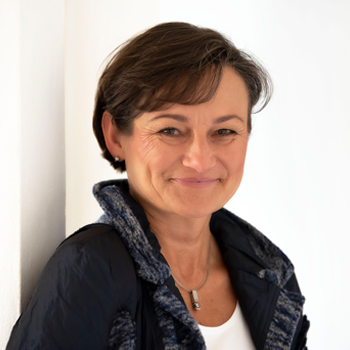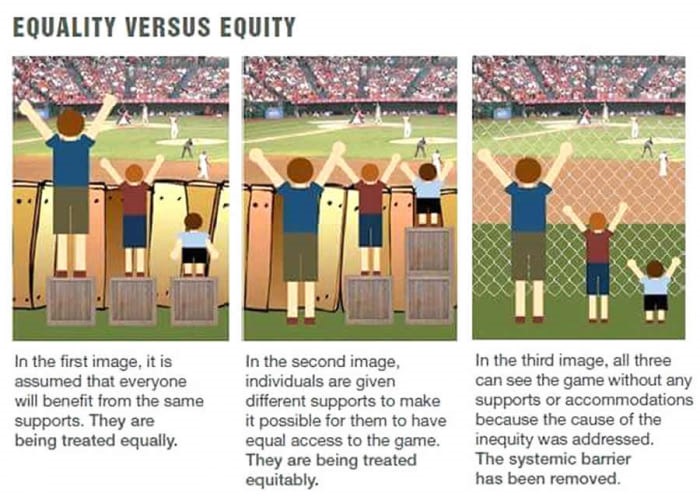[IAHR Talks] Interview with Silke Wieprecht. Focus on gender equity
 “We currently have about 25 per cent women in the association. So, within the next five years in IAHR, we can and want to reach the number of 30 per cent women that work in the engineering sciences on the whole. But this should also be reflected in the leadership teams…”
“We currently have about 25 per cent women in the association. So, within the next five years in IAHR, we can and want to reach the number of 30 per cent women that work in the engineering sciences on the whole. But this should also be reflected in the leadership teams…”
Gender equity within IAHR is one of the main concerns of Silke Wieprecht, vice-president of IAHR and chair of the recently created task force on Strengthening Gender Equity*.
David Ferras, editor of NewsFlash World and vice-chair of IAHR technical committee on Education and Professional Development, interviews Silke Wieprecht.
Gender equality or gender equity, is it a ‘chicken and egg’ problem?
For me it’s not a chicken and egg problem, so much as it’s two different things. I think many people don’t even realize the difference. So let me briefly explain.
Equality generally refers to equal opportunities and equal support for all sectors of society. Equality assumes that everyone in the same place has to deal with the same obstacles and that everyone needs the same help or support. It therefore means that everyone should be treated equally. However, it’s not always fair to treat everyone equally.
Equity, however, goes a step further and refers to offering different levels of support according to needs in order to achieve greater fairness for all.
Let me explain with a little example. Imagine that not everyone has adequate access to food. Now one solution might be to provide the same food package for everyone. However, what you haven’t considered is that some individuals have specific needs or preferences: babies, children, the elderly, or diabetics, people with stomach problems or vegetarians, vegans, etc.
Equity ensures that all in need are provided with the right food and diet. This picture might also help to understand the difference between equality and equity.

Source of image: Advancing Equity and Inclusion, A Guide for Municipalities, June 2015, © City for All Women Initiative (CAWI), Ottawa.
What were the drivers that led you to build your career in civil engineering? How and when did you realize you would base your career in academia and in river hydraulics research?
Actually, I didn’t want to become a civil engineer at all at first. My career aspiration was agriculture engineering. However, my university advisor was very distant and told me that this was not something for ‘girls’. My father then suggested I do an internship on a construction site to get an idea of the profession of a civil engineer. And working on that construction site immediately inspired me. By the way, I worked on the construction site of the church where I was later married and my son was baptized.
The desire to change from structural engineering to hydraulic engineering only came during my studies. I had a student job and the professor I worked for got me interested in sediment transport and also later supported me as a mentor for a very long time through my professional life. I have never regretted this decision.
Could you briefly explain to us what the vision of your research group is? What are the main research questions you are trying to answer and how do they fit within the context of Sustainable Development Goals (SDG)?
We’re working on two main issues: dam safety and sediment transport. And these two topics fit very well together when you think of reservoir management, for example; specifically, we have a very good level of expertise in morphological issues and the influence of river morphology on ecology. I think this is where we tie in with SDG 6, 13 and 14 (Clean water and sanitation, Climate action and life below water). But we’re also trying to answer questions about very small-scale processes like grain sorting, colmation or the influence of cohesion and adhesion on the beginning of transport. One of our new projects deals with microplastics in river sediments and their impact on the environment.
Since the start of your career until now, have you noticed any improvement in terms of gender equity in civil engineering in the context of your professional development?
When I started my studies, we were about 30 women in a class of about 300 or 400 men in civil engineering. As one of just a few women in such a male-dominated world I felt like I stood out and it could sometimes get a bit lonely. Today, at least as far as the numbers are concerned, things have changed. In Germany we have about 30 to 35 per cent women in engineering courses.
Nonetheless, we can see that the proportion of women decreases significantly the further we climb up the career ladder. That certainly depends on a variety of factors. On the one hand, the classic role models are still very much alive. It is expected of us women - even if it is often unspoken - that we take care of the children. And even if you live in an equal partnership, it’s difficult to manage childcare and the demands of two full-time working parents.
On the other hand, women often have very high expectations of themselves. We have no doubt that we can fulfil a leadership role. In fact, we’re often too self-critical and doubt whether we can fulfil the demands of the position sufficiently well. And this is where role models can help us realize "if she can do it, then I can certainly do it, too".
Could you briefly explain the vision and goals of the newly created task force for strengthening gender equity in IAHR?
The objectives of the task force on Strengthening Gender Equity head precisely in this direction. Firstly, we want to increase the proportion of women in IAHR. We currently have about 25 per cent women in the association. So, within the next five years in IAHR, we can and want to reach the number of 30 per cent women that work in the engineering sciences on the whole. But this should also be reflected in the leadership teams. In other words, we want to create role models to make it easier and more natural for women to get involved in IAHR. Having role models also means that we want to make sure that women are more visible, i.e. more women as keynote speakers at conferences, in the composition of the technical committees and working groups, in the formation of the scientific committees etc. This share of representation is also anchored in our new Constitution and the By-Laws. We will pay more attention to ensuring that this will be put into practice.
It’s important to note that we do not want to ‘take away’ positions from men, but rather we seek to bring to light a somewhat hidden strength of the IAHR. On the occasion of the International Day of Women in Engineering on 23 June we created a mosaic with many photos of the women of IAHR. The headline was "Together we build science - together we are IAHR". I think that expresses it very well.
Should men be more active and engaged in defining and implementing the initiatives for gender equity at IAHR?
Absolutely. The topic is ‘Gender Equity’, not women's rights. We would like our association to have a diverse make-up. We can only win with a diverse society. I read the slogan the other day: ‘Intelligence through diversity’. The German Research Foundation’s motto is ‘Diversity and excellence are inseparable’. This shows that diversity and equity is not a women's issue. It must be a common concern of ours to represent and maximize our existing inventory of excellence.
Education may be the source but also the solution to gender inequality. Our impact on younger generations fosters the future of IAHR. Besides the task force on Strengthening Gender Equity you’re also leading a task force for Young Professionals. Could you point out any synergies between the task forces?
The young generations are our future. If we want to change something in the composition and self-perception of our community, we have to start with the young generations.
On the other hand, I also see the work with the Young Professionals Networks (YPNs) as a great challenge. The general structures in our society are no longer as they used to be, where it was taken for granted that you defined yourself by belonging to an organization and established your network solely through membership. Networks today are digital and omnipresent in the form of social media. We have to open up IAHR in this direction and be even more present there. If we don’t extend our offer, we run the risk of not adequately integrating young people. On the other hand, this is also a great balancing act. Because IAHR is undoubtedly not just about ‘social’ connections. We are an internationally networked professional association at a very high level. And we would like to promote this as well. Social media alone are surely not enough. Bringing these two ‘worlds’ together is certainly an exciting but also not so easy task for the coming years.
Any advice to young IAHR professional women?
Believe in yourself and don’t doubt too much. To a certain extent, self-criticism is healthy and appropriate. It drives you to higher achievements and better results. But from a certain point onward, it’s also ok to be satisfied with what you have created and accomplished and pause for a while.
Don’t let yourself be impressed or even discouraged by strange remarks, platitudes or disrespectful comments from some male colleagues. Many of them don’t even mean it badly. Most are simply not sensitive to the subject. These people can be made aware of it in a friendly but clear way. Most of the time they take it with pleasure and often are very grateful, because they were quite honestly not aware of it. The others, who actually meant it maliciously, are just stupid. You can ignore them deliberately.
*Silke Wieprecht is also chair of the Division for Innovation and Professional Development and chair of the task force on Membership Benefits and Recognition.